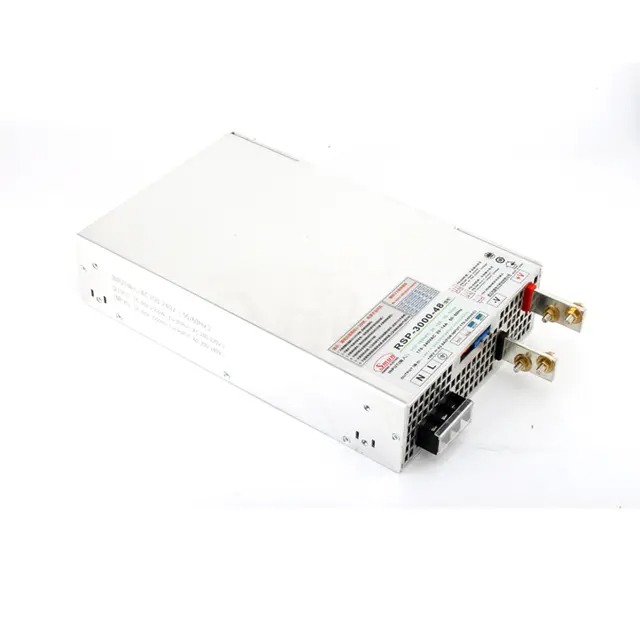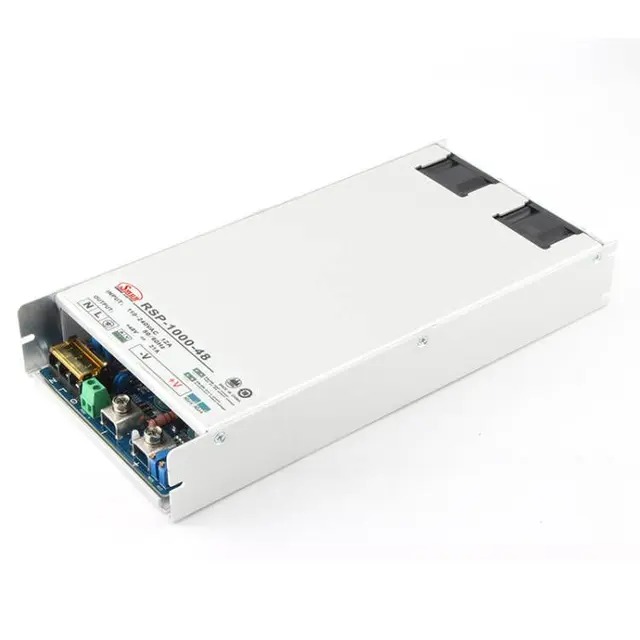
When selecting a switching power supply for your application—whether for industrial control, LED lighting, automation equipment, or telecom systems—it’s tempting to assume all models are alike. After all, they often share similar voltage ratings, form factors, and claimed efficiency levels. But here's the truth: not all switching power supplies are created equal. Beneath the surface lies a complex ecosystem of design philosophies, component choices, safety protocols, and application-specific features that can significantly impact performance, reliability, and safety.
In this article, we will dive deep into the nuances of switching power supplies, break down their defining characteristics, and help you understand what truly differentiates a high-quality unit from a substandard one. This exploration is not just for engineers—it’s for anyone who values reliable, long-lasting electrical performance.
What Is a Switching Power Supply?
Before comparing, we must first define what we’re comparing. A switching power supply (also called a switch-mode power supply or SMPS) is an electronic device that converts electrical power efficiently from one form to another, typically from AC to regulated DC. It achieves this using high-speed electronic switching and energy storage components like inductors or capacitors.
Core Functions and Operation
The key function of a switching power supply is to regulate output voltage despite variations in load or input. This is achieved through:
High-frequency switching transistors, which chop the input voltage.
Transformers, which isolate and convert voltage levels.
Rectifiers and filters, which smooth the output.
Compared to linear power supplies, SMPS units are lighter, more compact, and more energy-efficient. However, their complexity demands quality engineering to ensure long-term reliability.

Key Differences Between Switching Power Supplies
Despite superficial similarities, switching power supplies can differ significantly across several important factors. The following aspects should be considered when comparing units:
1. Power Output and Voltage Tolerance
Some power supplies advertise a fixed output voltage but offer very limited tolerance for fluctuation. A high-quality supply, such as one rated at 100W 12V 8.5A, will maintain output within a tightly regulated margin even under varying load conditions. Always check:
Voltage regulation (%): How much the voltage varies under load.
Ripple noise (mVp-p): The smoothness of the output.
Efficiency (%): The ratio of output to input power.
These technical values make a big difference when powering sensitive electronics, which may malfunction with even slight voltage dips or spikes.
| Parameter | High-Quality Supply | Low-Quality Supply |
| Voltage Regulation | ±1% | ±5% or worse |
| Ripple & Noise | < 120mVp-p | > 200mVp-p |
| Efficiency | ≥ 88% | ≤ 75% |
2. Thermal Management and Cooling
Another major differentiator is how well the unit handles heat dissipation. Heat is the silent killer of power electronics, and without proper thermal design, the internal components degrade rapidly.
Advanced switching power supplies feature:
Efficient air convection or fan cooling.
Over-temperature protection (OTP).
Built-in heat sinks on critical components.
Low-end alternatives often lack any thermal shutdown mechanisms, making them a ticking time bomb when installed in enclosed or high-temperature environments.
3. Protection Mechanisms
Robust protection is non-negotiable for critical applications. Look for units that incorporate multiple layers of protection, including:
Overload Protection (OLP): Prevents damage during high load conditions.
Short Circuit Protection (SCP): Cuts output when a short is detected.
Over Voltage Protection (OVP): Safeguards the load from excessive voltage.
Over Temperature Protection (OTP): Shuts down the device before overheating.
A switching power supply without these protections might cost less upfront, but it could lead to equipment failure, downtime, or even fire risks in the long run.
Application-Specific Customization
One of the most overlooked aspects is how well the supply is optimized for your specific application. A power supply used in an LED display needs very different characteristics compared to one used in an industrial controller.
Factors to Consider for Specific Applications
Size and Mounting: Compact designs with standard screw terminal blocks simplify integration.
Certifications: Safety and EMC compliance (e.g., CE, RoHS, UL) are critical for meeting regulatory standards.
Ambient Conditions: Supplies with wide operating temperature ranges (e.g., -30°C to +70°C) are more durable in extreme environments.
Start-up Time: Fast response is essential for automation systems requiring real-time feedback.
Choosing a “general-purpose” power supply might seem cost-effective, but mismatching the specs can lead to higher lifecycle costs due to inefficiencies or premature failures.
FAQs – Common Questions About Switching Power Supplies
To help clarify the confusion, here are some frequently asked questions users have when selecting switching power supplies:
Q1. Can I use any switching power supply for my application?
Not always. The wrong voltage, inadequate protections, or thermal issues can lead to failures or even hazardous situations. Always match the unit’s specs with your application’s exact requirements.
Q2. Why does my power supply get hot even when under light load?
This can indicate low efficiency or poor heat dissipation. Check if the unit is convection-cooled or fan-cooled. If there's no airflow or the power supply lacks OTP, it's not safe.
Q3. Is ripple noise important?
Yes. Ripple noise can interfere with sensitive electronic circuits, particularly in communication systems, sensors, or audio equipment. A high ripple value is a red flag for low-quality internal filtering.
Q4. What’s the expected lifespan of a good power supply?
Quality units can last 5–10 years or more, especially if equipped with protective features and rated components. Cheaper units may fail within a year due to substandard capacitors or lack of thermal protection.
Q5. Do all supplies support universal AC input?
Many premium models support 85–264VAC, making them suitable for international use. However, some low-cost units only accept narrow AC ranges (e.g., 110–120V), limiting flexibility.

Practical Guidelines for Choosing the Right Switching Power Supply
Selecting the right unit is more than checking the output voltage and current. Here are several expert tips to help you make an informed decision:
1. Derate for Longevity
Always choose a power supply with 20–30% higher wattage than your maximum load. For example, if your system requires 80W, opt for a 100W unit to ensure cooler operation and longer life.
2. Check for Environmental Ratings
Supplies used in dusty, humid, or high-vibration environments should offer IP ratings or conformal coating on PCB boards to resist corrosion and dust intrusion.
3. Demand Full Documentation
Always ask for a complete datasheet, including safety certifications, mechanical drawings, and wiring diagrams. This ensures you're buying a legitimate, tested product.
4. Avoid Overly Cheap Units
If the price seems too good to be true, it probably is. Lower-cost models often cut corners on safety components or use inferior capacitors, which can lead to catastrophic failures.
Conclusion
So, are all switching power supplies the same? The answer is a resounding no. The real differences lie in the engineering choices, component quality, protective features, and suitability for your application. What may seem like minor variations in specs can mean the difference between safe, efficient operation and system-damaging failure.
Investing in a high-quality switching power supply is a smart, long-term decision—especially when dealing with mission-critical or safety-sensitive equipment. Remember, the power supply is the heart of your system’s energy. Choose wisely.





















